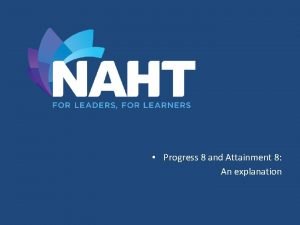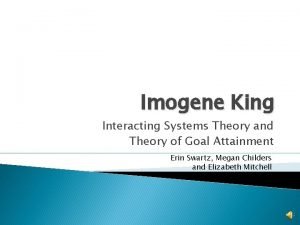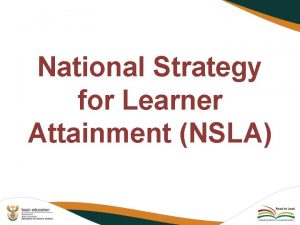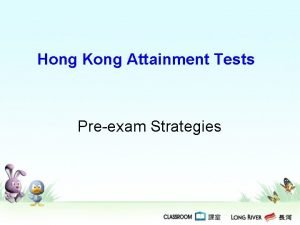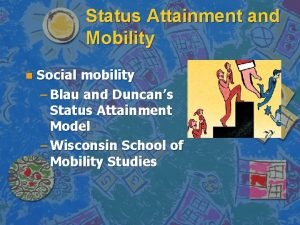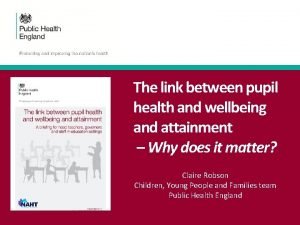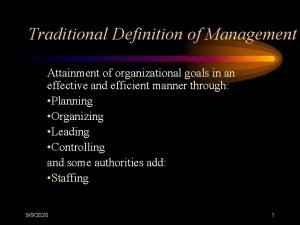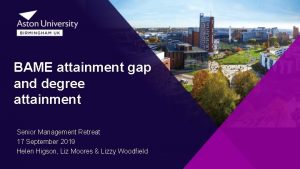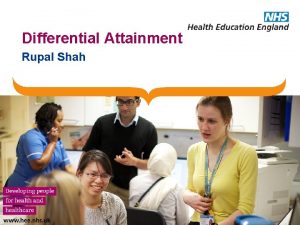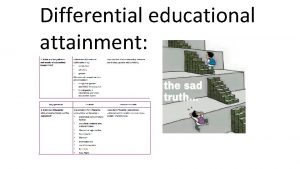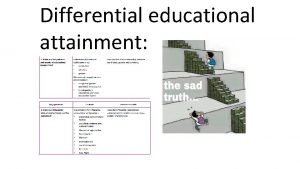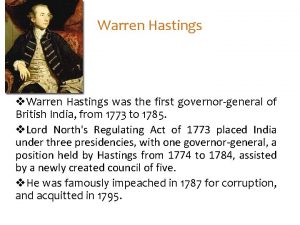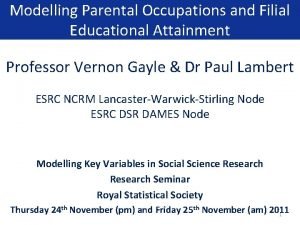Educational Attainment in Hastings Presentation to the Hastings




















- Slides: 20

Educational Attainment in Hastings Presentation to the Hastings LSP Fiona Wright October 2014

We will cover: • 2014 provisional attainment outcomes • Plans to raise education standards in primary schools • Feedback on the Ofsted inspection of school improvement • Role of the education authority in relation to academies • Education as part of the wider regeneration of the area (recruitment issues for partners) • Supporting young people into work

2014 EYFS provisional results: % pupils achieving a “Good Level of Development 100 90 80 70 65, 8 60, 4 60 National Average 52 50 East Sussex Average 43, 8 Hastings Average 37, 5 40 30 20 10 0 2013 2014

2014 KS 1 provisional results: % pupils attaining Level 2 b or above in reading 100% 90% 80% 76% 79% 73, 9% 81% 76, 1% 74, 2% 70, 8% 68, 6% 70% 79, 2% 60% National 50% East Sussex Hastings 40% 30% 20% 10% 0% 2012 2013 2014

2014 KS 1 provisional results: % pupils attaining Level 2 b or above in writing

2014 KS 1 provisional results: % pupils attaining Level 2 b or above in mathematics 100% 90% 80% 76, 0% 75, 5% 78, 0% 73, 0% 80, 0% 78, 8% 75, 9% 72, 5% 70, 4% 70% 60% National Average 50% East Sussex Average Hastings Average 40% 30% 20% 10% 0% 2012 2013 2014

2014 KS 2 provisional results: % pupils attaining Level 4 or above in R/W/M 100, 0% 90, 0% 80, 0% 74, 0% 75, 0% 71, 0% 70, 0% 78, 0% 77, 7% 72, 0% 67, 6% 74, 9% 69, 8% 60, 0% National Average 50, 0% East Sussex Average Hastings Average 40, 0% 30, 0% 20, 0% 10, 0% 2012 2013 2014

KS 4: % of Pupils Achieving 5 or more GCSEs A*-C including English and Maths 100, 0% 90, 0% 80, 0% 70, 0% 60, 6% 59, 9% 58, 8% 58, 2% 52, 6% 48, 8% 50, 0% 46, 8% National Average 45, 3% East Sussex Average Hastings Average 40, 0% 30, 0% 20, 0% 10, 0% 2012 2013 2014 (First Entry)

Plans to raise education standards in primary schools (1) • ELKLAN – developing early speech, language and communication • Phonics training programme • Support for RI schools to move to good • Aiming high in year 2 – achieving L 2 B+ in reading, writing and maths • External Adviser Programme

Plans to raise education standards in primary schools (2) • Leading improvement in KS 1 – led by St Mark’s, Hadlow Down • English and maths subject leader networks • Aiming high in year 6 maths –increasing the percentage of children achieving L 4+ and above

Plans to raise education standards in primary schools (3) • Aiming high in year 6 reading and writing – increasing the percentage of children achieving L 4+ and above • Support for SEN and closing achievement gaps in targeted schools • Moderation

Ofsted - why were we inspected? • The new inspection regime for Local Authorities was introduced in January 2013. • There are only two judgments possible from the inspection – Effective or Ineffective. • Only those authorities which meet certain triggers are inspected. 12

What were the main findings? • The judgment was that the local authority arrangements for supporting school improvement are ineffective. • Inspectors agreed that we have the right strategy for improvement going forward and that there had been positive engagement with Headteachers in its development. • However, they were clear that we need to increase the pace of improvement, particularly in the primary sector, so that outcomes are at least in line with national averages by 2015. 13

Strengths • The proportion of secondary and special schools judged good is significantly above average; as is the proportion of outstanding special schools. • The impact of the Virtual School can be seen in the above-average achievements of looked-after children. • Initiatives like the ‘Village School’ in the Early Years Foundation Stage, are helping to prepare children for school more effectively and improve the quality of provision. • A higher-than-average proportion of school-leavers in 2013 participated in their chosen education or training. • Well above average proportions of students who attend further education colleges and sixth forms now access good provision. 14

Priorities for Improvement Priority 1: Halt the decline in primary school performance and accelerate the pace of improvement, so that inspection outcomes are at least in line with the national averages by summer 2015. Priority 2: Identify and communicate unequivocally to underperforming schools that their rate of improvement is not good enough and follow through with robust monitoring. Priority 3: Systematically monitor the impact of support and intervention provided by school improvement services, holding managers to account more effectively for the quality of the provision. Priority 4: Rapidly improve and sustain high attainment in English and mathematics by the end of all key stages, especially for pupils known to be eligible for free school meals 15

Priorities for Improvement Priority 5: Ensure all learners have successful transitions between the phases of education training or employment to age 19, and sharply improve Level 3 attainment. Priority 6: Provide strong strategic leadership and challenge to schools to support the reduction of temporary exclusions across all types of schools. Priority 7: Ensure every school has high calibre leadership and governance and rapidly increase the number of effective leaders in primary schools, through pursuing key local authority strategies such as school-to-school support. Priority 8: Provide all governing bodies with timely information and guidance to enable them to evaluate how well their school is performing and provide informed challenge to school leaders

Post-Ofsted action plan • We have an action plan for improvement against each of these priorities • Will be working closely with Education Improvement Partnerships to consolidate the improvements in outcomes we have seen in 2014.

Role of the LA in respect of academies • Statutory Duty to ensure all children in East Sussex receive a good education • Ofsted expectation that LA will monitor Academy Performance, offer support and advise Df. E and Ofsted of concerns • Elected members committed to all children being able to attend a school that is at least good and LA working in partnership with academies in East Sussex

Recruitment of Headteachers • Shared Leadership Options – Federations and Partnerships • Expanding the leadership internship programme, and work with Teaching Schools to support the development of outstanding leaders. • Working in partnership with the National College to increase opportunities for leadership development programmes. • Exploring strategies for encouraging strong headship applicants from both inside and outside East Sussex.

Supporting young people into work • Supporting schools to provide good Information, Advice and Guidance – Investors In Careers • Targeted one to one information, advice and guidance for vulnerable 16 -18 year olds • Employment with training programmes • Working with partners to create more apprenticeships • Young Enterprise programmes • Corporate Employability and Skills Strategy
 Progress 8 calculator
Progress 8 calculator Mixed attainment maths
Mixed attainment maths Advantages of concept attainment model
Advantages of concept attainment model Kings theory of goal attainment
Kings theory of goal attainment Maternal role attainment theory
Maternal role attainment theory Learner attainment improvement plan 2020
Learner attainment improvement plan 2020 Goal attainment scale light
Goal attainment scale light Families of teaching models
Families of teaching models Goal commitment
Goal commitment Affiliated ascertain attainment
Affiliated ascertain attainment Attainment test examples
Attainment test examples Ultimate attainment
Ultimate attainment Blau and duncan
Blau and duncan The link between pupil health and wellbeing and attainment
The link between pupil health and wellbeing and attainment Attainment targets barbados
Attainment targets barbados Concept attainment quiz
Concept attainment quiz Raising attainment
Raising attainment Traditional definition of management
Traditional definition of management Progress 8 buckets
Progress 8 buckets Why did william win
Why did william win Jordan hastings
Jordan hastings
